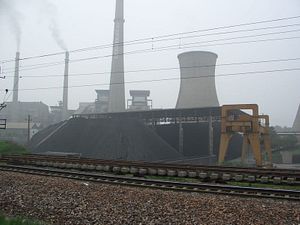Since the COP21 climate talks concluded in Paris, India and China have increasingly been turning to renewables to power their economies. According to a landmark plan, India aims to install 275 GW of renewable energy by 2027 – as a point of reference, total installed electrical capacity in 2016 hovered around the 300 GW mark, 70 percent being derived from coal gas and diesel. The targets outlined in December put India on a pathway to generating some 57 percent of its energy from renewables. Meanwhile, China is already the world’s leader in wind-generated power and aims to triple solar capacity by 2020. China will also be host to the largest solar farm on the planet, eventually covering 4,607 hectares and produce 2 GW once completed.
And the renewable revolution doesn’t stop there. After the precipitous fall in global oil prices, even the world’s biggest petroleum exporter is now forced to reduce its reliance on fossil fuels. According to insiders, Saudi Arabia seeks an increase of 700 megawatts from wind and solar power generation and plans to add 8.8 GW of renewable power to the national energy mix between 2019 and 2023. Currently, the Kingdom burns more oil for domestic electricity generation than any other country, consuming more than 900,000 barrels per day.
Owing to its climate and geography, Saudi Arabia is particularly well-suited to solar energy. That is fortunate, considering its current energy consumption pattern is thoroughly unsustainable: if current trends continue, the Saudis will turn into net importers of oil by 2038. That explains why Saudi’s Vision 2030 diversification plan extols the virtues of a renewable energy market as a guarantee of sustainable development.
Reason for Optimism?
As grand as these targets are – unthinkable a mere two years ago when India threatened to collapse the COP21 negotiations – serious obstacles lie ahead, especially in cobbling together the trillions needed to finance the shift away from carbon. Both the Chinese and Indian power infrastructures are underdeveloped and geared toward traditional energy sources such as coal and oil. China suffers from weak and inefficient power transmission between its regions as a result of subpar management by state-owned enterprises (SOEs), and inefficiency issues are exacerbated by the fact that energy produced in one region does not reach where it is needed. The Indian grid’s unreliability was laid bare in 2012, when the country experienced massive blackouts that left more than 700 million people in the dark. To this day, up to 50 percent of energy is lost during transmission. Overhauling dated energy infrastructure is therefore paramount to creating viable renewable energy sectors. But this kind of rebuilding requires major investments from public and private partners, since the costs associated exceed the capacity of one single state.
When leaders from the developed world pushed Prime Minister Narenda Modi’s government to refocus his government’s energy plans on renewable power on the sidelines of the COP21, the Indian leadership agreed – if those affluent countries helped India and other developing countries cover the costs. Modi was one of the loudest voices for the creation of the “climate justice” fund, a $100 billion a year commitment from 2020 onwards. Reflecting the shift in where global capital is to be found, India signed a deal with Japan’s Softbank, which pledged to invest $20 billion into the country’s renewables sector. The private sector has helped India make up much of the gap in outside state investment, though New Delhi is still seeking to attract $1 trillion in financing for the power sector by 2030.
For its part, Saudi Arabia has gone through considerable effort to pitch its economic restructuring (and the investment opportunities that come with major privatizations) to partners in the United States and the United Kingdom. A first GE-made wind turbine was shipped to the Kingdom, and will start operating in 2017. The U.K., still trying to mitigate the long-term fallout of the Brexit vote, has turned out to be especially receptive. On a trip to the Gulf earlier this month, Britain’s Theresa May made it clear her country stood ready to partner with the Saudis in terms of technical assistance and trade and praised the potential for “Gulf investment regenerating cities across the U.K. or British businesses helping Gulf countries to achieve their long-term vision of reform.” A major part of that reform, of course, will be moving Saudi consumers away from burning oil that could otherwise be exported. And with a Free Trade Agreement between the two parties currently being discussed, British investment will prove an effective tool for strengthening ties.
Whereas India and Saudi Arabia are in open pursuit of outside help, economic planners and officials in China have turned renewable energy investments into a centralized national project. Last year, the Chinese government not only announced its intent to invest 2 trillion yuan ($315 billion) into power grid development but also outstripped the U.S., U.K., and Japan combined in renewable energy investments with over $100 billion in spending. It is, in fact, in large part thanks to China that the developing world can point to a nearly continuous upward trend in clean energy investments from 2004 on.
While aging power infrastructure and financing challenges might still present daunting obstacles, mainland Asia’s largest economies are clearly on the same page when it comes to the future prospects of wind and solar power. That major fossil fuel producers are now following the global trend should be taken as the most emphatic evidence yet that the switch to renewable sources of energy is, over the long term, irreversible. The questions that remain to be answered are how effectively and how quickly these countries can proceed through the process of switching over.

































